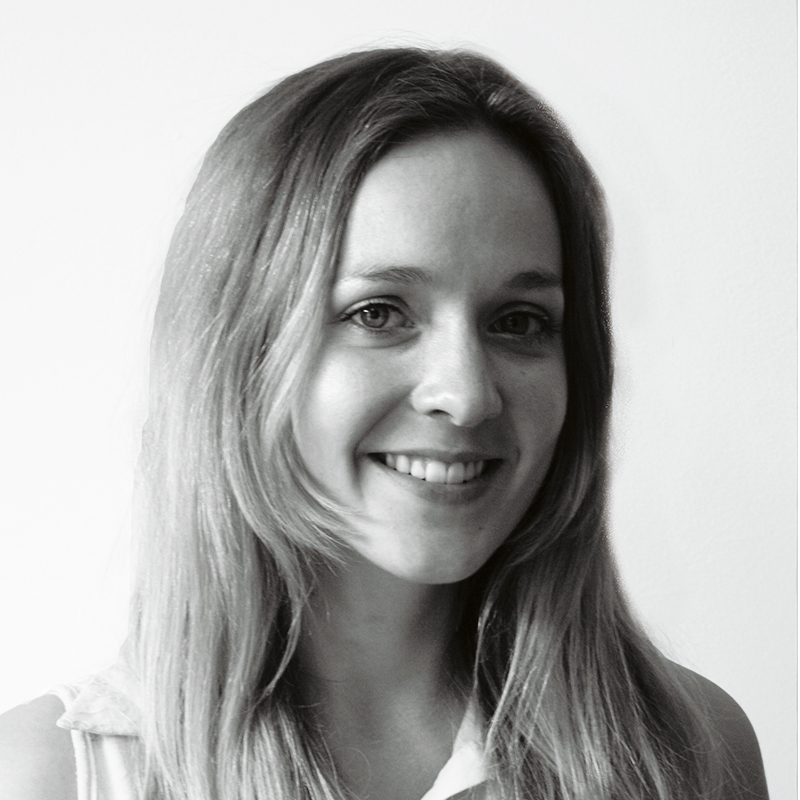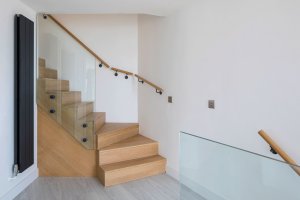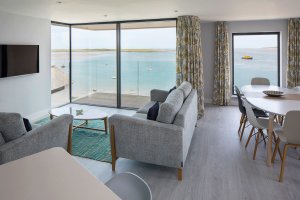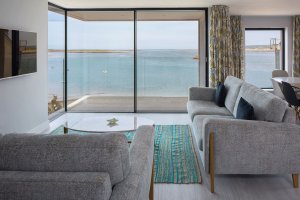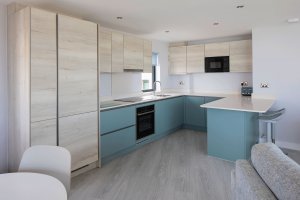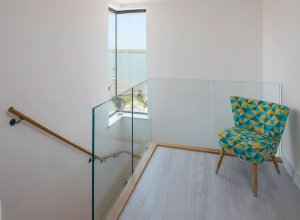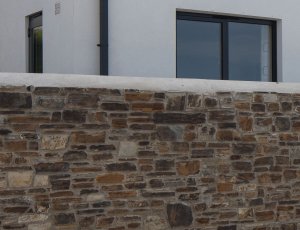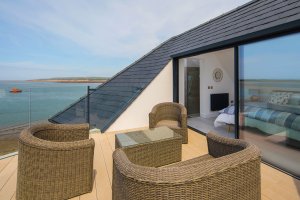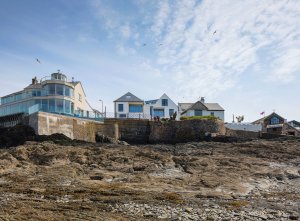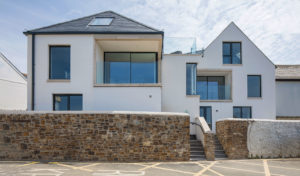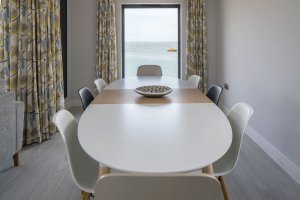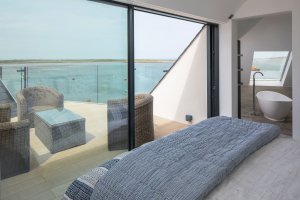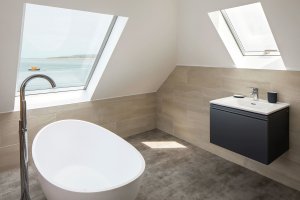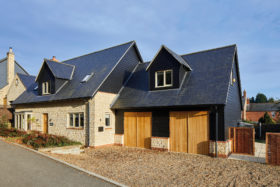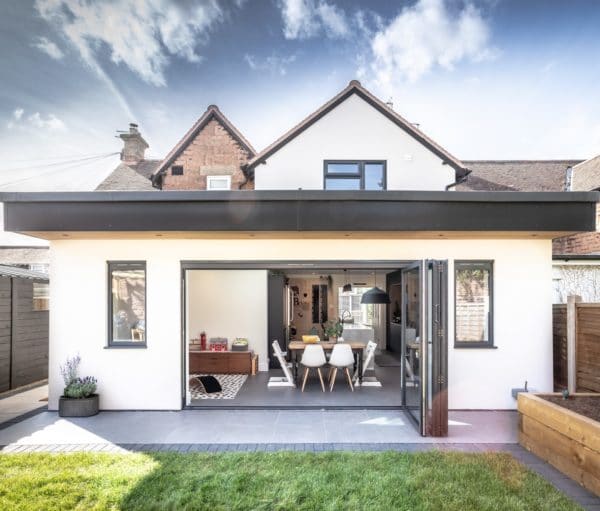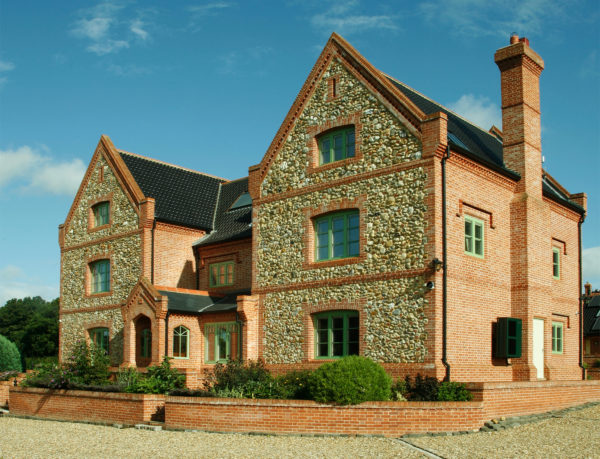Two Sleek Ocean-Front Homes in North Devon
Having tackled numerous self build and renovation projects over the years, Mark and Clare Flower have a wealth of experience in spotting opportunities ripe with potential.
As they moved closer to retirement, the pair turned all their attention to the search for a perfect holiday home.
Based in Hampshire, the Flowers’ quest started in 2012 and took them all over south west England. “My wife has always wanted to find a project where we could create something with uninterrupted sea views,” says Mark.
It was two years before the couple discovered a rundown bungalow in North Devon, positioned on a site with the ocean outlook they’d been dreaming of.
“We were in a privileged position in that if we didn’t find the ideal site quickly, it didn’t matter, as we were never going to live there permanently,” says Mark.
Situated within the quaint fishing town of Appledore, the single-storey abode benefited from far-reaching sea views. Plus, it was only a five-minute walk from shops, restaurants and other local amenities. “As we’re getting older, we wanted a place that offered an easy, level walk to nearby facilities. That was one of our main criteria. With this site, it’s worked out superbly,” says Mark.
- NamesMark & Clare Flower
- Occupations Civil/structural engineer and chartered surveyor
- LocationDevon
- Type of projectSelf build & property development
- styleContemporary
- Construction methodBlockwork cavity walls, with elements of steelwork throughout
- pROJECT ROUTEArchitect & main contractor
- plot size219m2
- land cost£250,000
- bought2014
- house size 170m2 (the Flowers’ house) & 184m2 (sold property)
- project cost£700,000 for both dwellings
- project cost per m2£1,977
- total cost£950,000
- building work commenced March 2017
- building work took58 weeks
Self build strategy
The plot already had planning permission for a scheme to demolish the existing bungalow and create a new home in its place. Therefore, Mark and Clare were confident from the outset that they’d gain consent for a fresh design that met all their requirements.
One of the couple’s key goals was to find a site large enough to accommodate two new properties. That way, they’d be able to sell one at a later date to pay off the building loan.
“Having completed similar small developments before, we know a plan like this works well. In a sense, you’re building two houses and getting one for free,” says Mark. “Our plan was to keep one as our own holiday home and rent it out for several weeks during the peak summer period.”
Developing the design
With the ideal plot now in the bag, Mark and Clare began thinking about a suitable design for the two houses. They didn’t have to look far to find a professional to handle this aspect, as Mark’s son, David, is the director of his own firm – Flower Kittle Architects.
The existing planning permission had already received numerous objections from the local community, as the aesthetic wasn’t in keeping with the vernacular style. The Flowers therefore set about creating something fresh that responded to the unique quirks of the location.
“The site was quite restricted in terms of its size and shape, so we had to maintain a clear design principle and try not to overcomplicate things,” says David. “The best views are to the north, so we wanted to bear that in mind as the drawings developed.”
The plot is on the edge of a conservation area – another important factor that informed the plans. “This wasn’t a case of a client coming to us with an existing proposal they had already envisioned,” says David. “We really focused on responding to the features of the land and getting more creative in that sense.”
To help fit in with the local architecture, blockwork was quickly selected as the structural system. “There are a number of terraced fishermen’s cottages nearby that are all rendered and painted in different colours,” says Mark. “The building next door to us features a smooth white finish, so we were very keen to go with something like that.”
Once the finished proposal was submitted to the planning department, it sailed through without any issues. “Surprisingly, the process was relatively straightforward,” says Mark. “I think the original design had received hundreds of objections and somehow still got consent. Ours went through first time.”
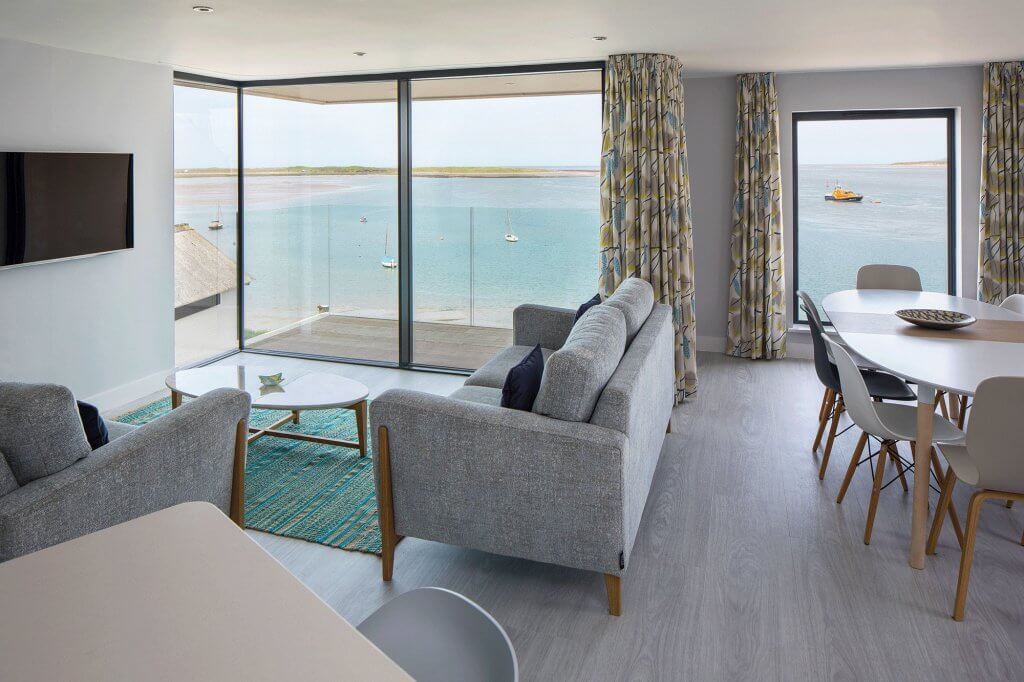
The living room is on the first floor of the property so occupants can enjoy the dramatic sea views
Working with trades
As Mark and Clare were based a three-and-a-half-hour drive away from Appledore, they knew they’d need to hire an excellent team of professionals to ensure the project progressed smoothly on site.
As such, they dedicated a significant portion of time to finding the right builder. The couple’s first step was to reach out to local architects and surveyors for recommendations of nearby firms.
They followed up every lead by talking to contractors on the phone, eventually whittling the list down to a selection of four or five companies. At this point, they travelled to Devon to look at previous projects each contractor had completed before putting the project out to tender.
“We only got two quotes, and as it happened, there was no real choice,” says Mark. The pair were able to identify who they wanted – a firm called Anderson and Evans – purely on the basis of the excellent quality of their tender.
“In fact, we’ve done numerous projects over the years, and I’d definitely say these are some of the best people we’ve ever worked with,” he says.
To keep things as simple as possible, the Flowers engaged Anderson and Evans as the main builder, and the company then outsourced jobs to various sub-trades. David handled overall project management duties, taking the four-hour drive there and back every two weeks.
The long days meant he had to be extremely efficient with time and have a clear understanding of what he wanted to achieve on each visit, but ultimately, this ended up working well.
“If I’d have been just around the corner, I’d have been there every day,” he says. “But as this wasn’t possible, I saw bigger changes each time I visited, which was great.”
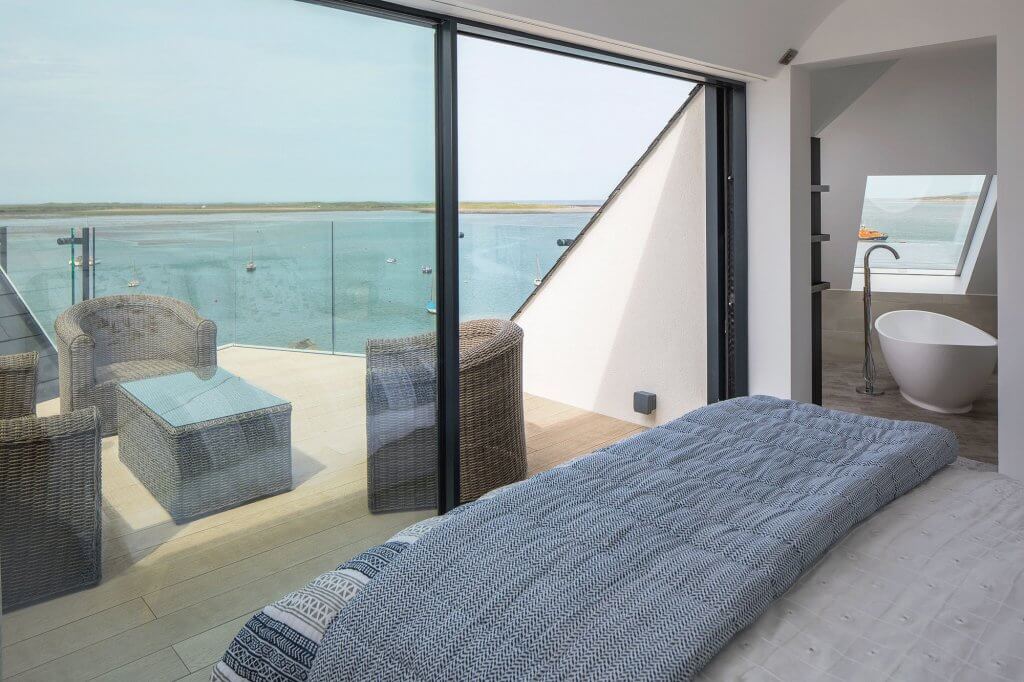
Mark and Clare’s bedroom, situated on the top floor of the house, enjoys fantastic views
Construction challenges
Despite the expertise and strong work ethic of the team on site, the build wasn’t without its complications. One of the biggest challenges the Flowers faced revolved around drainage connections and diversions.
Originally, they’d been given an estimate of £10,000, but the pair ended up spending nearly £40,000 in the end. “Every time we contacted South West Water with what we thought would be a simple solution to the issue, the figures from came back much higher than we’d initially anticipated,” says Mark. “Eventually, we couldn’t wait any longer – we had to bite the bullet and accept it.”
Though the properties are of blockwork construction, it turned out that a significant amount of steelwork was required to achieve the spacious open-plan spans the Flowers wanted.
“Both of the houses are quite a complicated shape – neither are rectangular,” says Mark. “You’d be able to go inside and wouldn’t think there’s any supporting steel, but actually there’s a lot – you just can’t see it.”
Getting the design for this element right took a bit of problem solving, and ultimately caused a two-week delay. Plus, every single piece of the material had to be galvanised because of the marine environment, which meant the process took a little longer.
Despite the minor headaches that popped up along the way, Mark thoroughly enjoyed the construction process. “My background is in civil structure engineering, so I relished the nitty gritty building aspects of it all, like seeing the steelwork go in,” he says.
Clare, on the other hand, preferred the research involved in specifying all the finishes for the living spaces. “She enjoyed the interior design and choosing products for the floor, walls, sanitaryware and kitchen. We complement each other well,” says Mark.
Completing the works
Now complete, the properties sit beautifully in their picturesque coastal setting. Broad swathes of glazing are set within powder-coated aluminium frames, achieving a contemporary aesthetic.
The innate strength of the metal means the Flowers have been able to maximise the ocean views via large spans of glass, without the need for glazing bars for extra support. “The windows were designed to capture the views when you look out to sea,” says Mark.
The roofs are topped with slate tiles to remain in keeping with other properties on the street and each of the houses is spread across three storeys, with the main living area and kitchen positioned on the middle floor.
This is so occupants can enjoy views from an elevated vantage point. A neutral colour palette ensures a crisp, clean look throughout, while luxury vinyl tiles provide a stylish and low-maintenance floor covering – an essential in the seaside setting.
Thanks to their experience working on past projects, Mark and Clare were able to make a saving on their kitchen suite. “You can spend a lot of money, but if you plan things carefully and source products yourself, you can get finishes and surfaces of a reasonable quality that will make the space look superb,” says Mark.
Each of the seven bathrooms had to be planned carefully at the design stage. “All the zones were different shapes and sizes, and even more so on the second floor with the sloping roofs,” says Mark.
“It was quite difficult to get right, so we worked very hard on sketching out various floorplans and doing our research on sanitaryware. In the end, they’ve all worked out very well.”
Successful project outcome
With both houses now complete, the Flowers have already managed to sell the larger of the two dwellings to pay back their building loan. Although they spent slightly more than they’d originally planned, the overall cost only went 10% over their original budget.
“No matter how you go about it, the price is more than likely to exceed what you initially expect,” says Mark. “Our extra spend was mainly due to things that were out of our control, like the drainage issue.”
Mark and Clare are delighted with the results of the scheme, and despite their extensive experience, they still acknowledge how much they’ve learned from this particular project.
“For us, building by the sea was totally new. We discovered a lot about the different design aspects and measures you have to put in place to ensure the durability of the structure,” says Mark.
Architect David is also delighted with how the development has turned out and is sure that he and his father will work together on something else in the future. “I think he’s getting a bit bored now we’ve finished it,” says David.
“We have a similar mindset and there’s a great understanding between us, which makes it easier – especially when you’re on site and you don’t have to be concerned about running everything by the client, because there’s that element of trust there. You know what each person’s intentions and ambitions are.”
As it happens, Mark and Clare are already on the lookout for their next opportunity – this time for a permanent home to live in once they retire. “We currently live in a grade II listed farmhouse with small windows and low beams, so we’d like to create something really modern,” says Mark.
However, the couple don’t think they’ll go for another seaside property. “We’re lucky to have this lovely house in Appledore that we can use when we wish. I don’t think I’d want the next place to compete with this one. At the moment, we’re just looking. It’ll take time, but watch this space.”
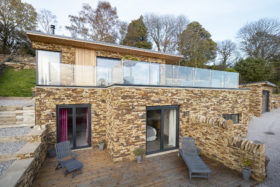






























































































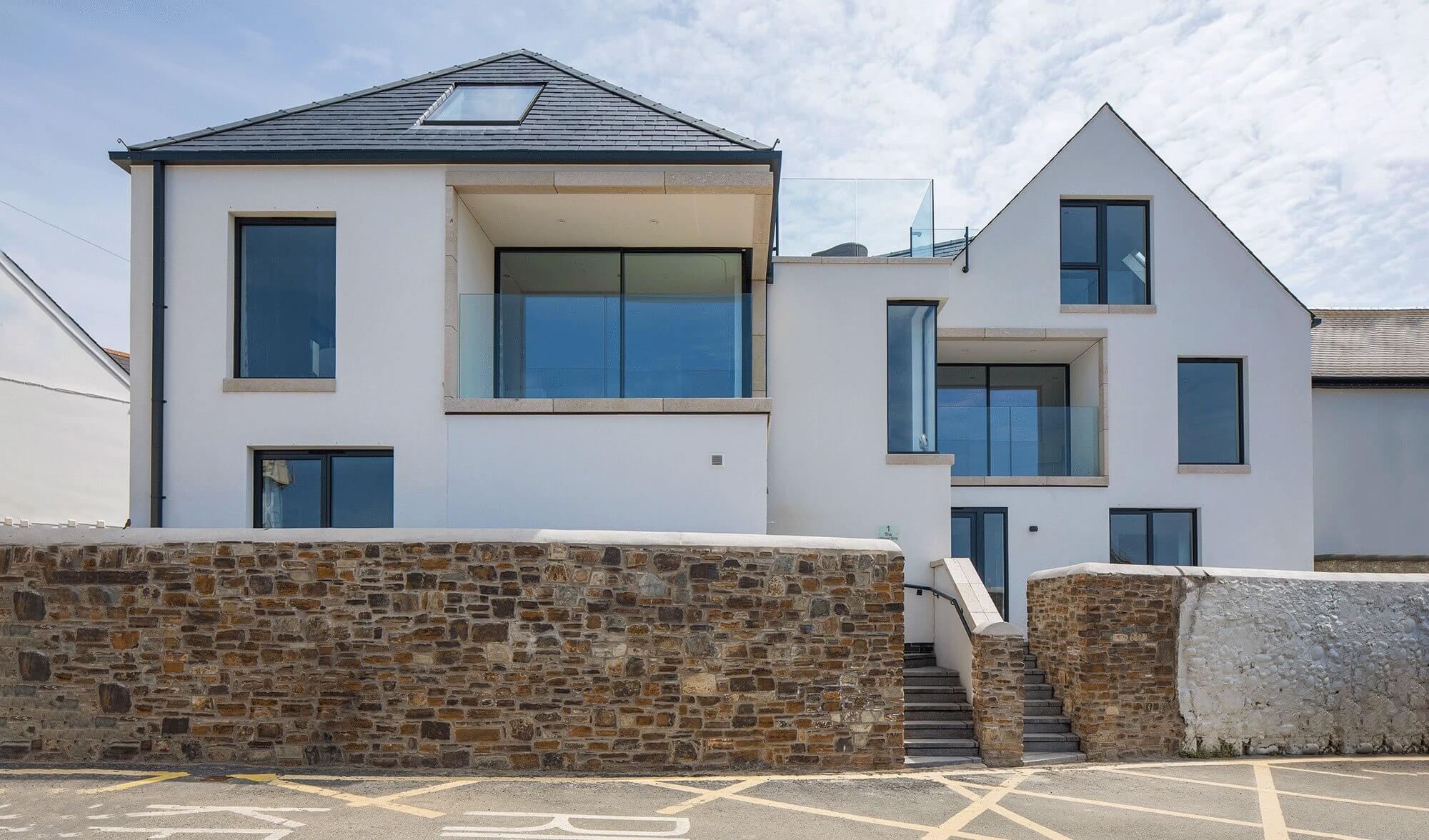
 Login/register to save Article for later
Login/register to save Article for later
